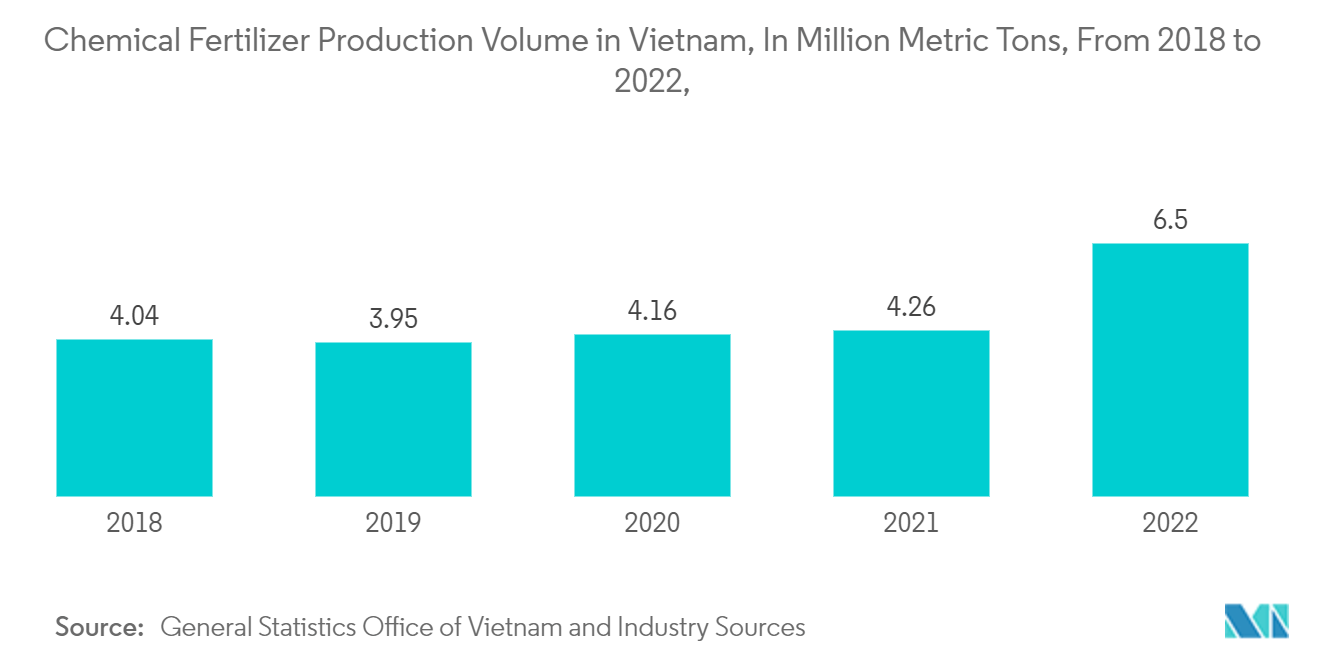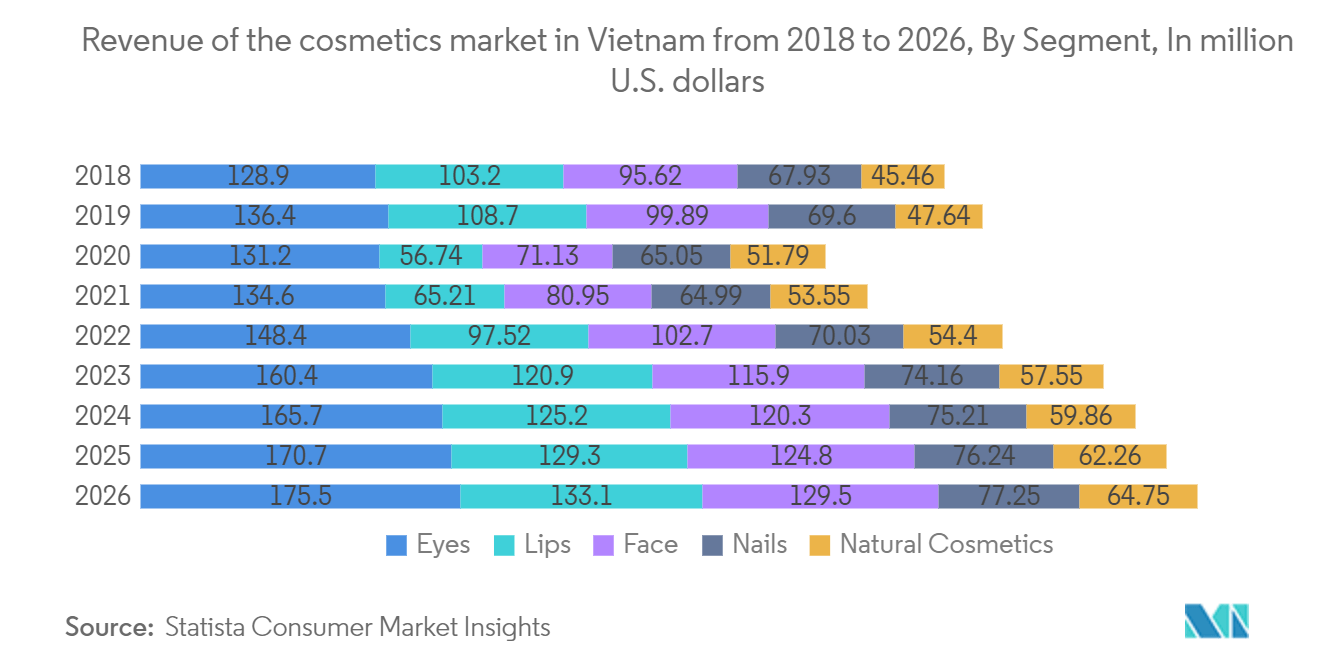Market Trends of ASEAN Chemical Logistics Industry
The Rise in Chemical Production is Expected to Propel the Growth of the Chemical Logistics Market
- According to the Industry and Trade Information Centre (VITIC), there are about 1.81 thousand chemical manufacturing firms in six economic areas across Vietnam, of which 894 are fertilizer manufacturers and 106 are chemical enterprises. plant protection chemicals, 68 companies manufacturing basic chemicals, 14 companies making petrochemical goods, and so on.
- The chemical sector today employs 2.7 million people, 725 thousand of whom are actively involved in the manufacture of chemicals and chemical products. According to data from the General Statistics Office, the chemical sector is still growing well, with bright spots in both output and consumption.
- In June 2022, the output of cosmetics, soaps, detergents, polishes, and hygiene products climbed by 7.7% compared to the first six months of 2021, and by 20.7% compared to the average month.
- According to data from the General Department of Customs, Vietnam's chemical export turnover in the first eight months of 2021 reached USD 1.45 billion, up 29.4% over the same period in 2020.
- Basic chemicals and detergents are examples of chemical items that Vietnamese enterprises might benefit from the EVFTA. Specifically, the tax rate for laundry detergents (HS 3402) was reduced from 4% to 0% as soon as the agreement went into effect, while the tax rate for phosphorus products (HS 2804 7000) was reduced from 5.5% to 0% as soon as the agreement went into effect.
- Exports of hydrogen, rare gases, and other non-metallic products of Vietnam also increased by 5% during the period while that of the world decreased by 6%.

Rise of Tech-Driven Logistics Services and Growth in Adoption of IOT Enabled Connected Devices
The chemical industry's increased demand for automation and modernized green warehouses for sustainable company operations drives market expansion. Chemical producers are rapidly investing in cost-effective warehousing solutions that integrate green practices with smart technology, such as the Internet of Things (IoT), smart sensors, and robots, as concerns about energy saving and environmental protection grow.
The Internet of Things (IoT) industry in Southeast Asia (SEA) has grown significantly in recent years, with enterprises realizing the need for connection, particularly in a Covid-19-affected world. Connected technologies are considered a driving force in increasing corporate efficiency, minimizing downtime, and regulating expenses.
IoT technology is key to Thailand's 4.0 plan and will be critical in driving the country's digital transformation. Narrowband IoT technology has been deployed across the country by companies such as AIS and True Corporation. Vehicle tracking and smart parking applications are now commercial, whereas smart metering applications are in the testing stage.
Thailand's dtac has announced the debut of 5G IoT solutions across three primary business segments: smart industrial, smart logistics, and smart utilities. Smart factory solution developers can access existing systems and develop digitalisation plans with IoT capabilities to collect, analyse, and monitor data in real time and remotely to improve efficiency, reduce operating costs, and conform to future digital platforms. IoT and smart sensors are projected to provide exact real-time monitoring of items as they are carried, allowing businesses to follow progress and increase security.
Furthermore, National Telecom (NT), WhiteSpace (WSP), Delta Electronics (Thailand), and Chunghwa Telecom have signed an agreement to collaborate on a 5G private network in Thailand. Thailand intends to use a 5G network to upgrade IoT to enormous IoT and enable a larger density of linked devices. Furthermore, Thailand's AIS has collaborated with ZTE and Suranaree University of Technology to convert manufacturing plants into smart factories.
According to ASEAN Briefing, Indonesia's IoT industry is predicted to reach USD 30 billion by 2022, with the sector having a substantial influence on lowering healthcare expenses, increasing industrial productivity, and lowering corporate operations costs.


